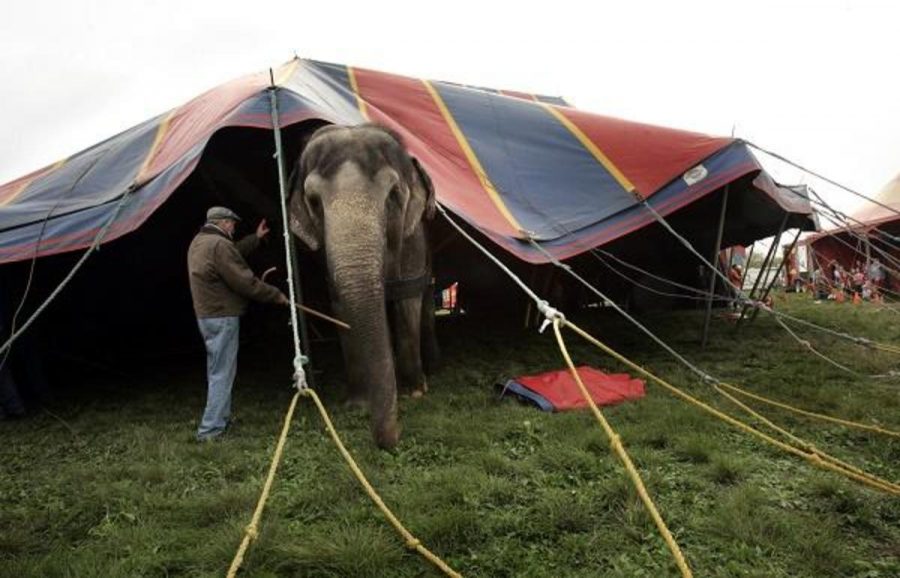Circuses under bar
Controversial flames ignite over use of mammals
Although the Ringling Brothers’ circus is eliminating the elephant act, there will still be events featuring tigers, lions horses, dogs, and camels. This is just one small step to helping the circus animals. However, many argue that the three years given for the elephants are too long for them to suffer even more.
March 12, 2015
“Animals, whom we have made our slaves, we do not like to consider our equal,” scientist Charles Darwin once said.
He could not have been more right.
For much of human history, dating as far back as the Romans with their gladiatorial fights, animals have been used for the entertainment of mankind. Think about modern society.
There is a massive variety of animal spectacles, ranging from horse races to dog shows. They may be enjoyable for spectators, but what happens behind the scenes?
Animal cruelty is defined as “any act of violence or neglect perpetrated against animals,” according the American Society for the Prevention of Cruelty to Animals (ASPCA).
The exhibition currently under scrutiny for animal cruelty is the circus. The ASPCA worries about the confinement, social deprivation, and violent training methods the circus animals suffer through.
The training ways are mainly through the use of intimidation and physical abuse. There have been many statements from former circus employees about seeing animals beaten, whipped, and denied food and water just to force them to learn their routines.
There are no government agencies that monitor animal training sessions.
Traveling is also stressful for the animals, where they are separated from their groups and confined or chained for long stretches of time with no food, water, or veterinary care.
There have been many actions that have happened against major circuses, more specifically the Ringling Bros. and Barnum & Bailey Circus.
The ASPCA, Fund for Animals, Born Free USA, and the Animal Welfare Institute all filed a lawsuit against these circuses, stating that the treatment of the Asian elephants violated the Endangered Species Act.
The hope was that if the larger circuses fell, the rest would soon follow suit. However, in 2009, the decision made was in favor of the circuses due to lack of evidence.
The good news is that the circuses announced on March 5 that they will take out the elephant acts by 2018. But, is that good enough? Does that even help solve the problem?
This question was discussed on the day of the circuses’ announcement by the Latin IV class. They read the article released by The Washington Post and gave their opinions on the issue.
“I think that they should keep the elephants. The circuses just have to care for them properly,” sophomore Patrick Tosh said.
There were more opinions tossed around as well.
“They’re talking about just the elephants. What about the tigers and lions? The main problem with animal cruelty is that there needs to be a limit to what we say is cruel or not for all animals,” sophomore Danielle Pratt said.
The issue here is not that animals are used in the acts, but that they are not cared for properly.
“There needs to be more government restrictions on how animals can and cannot be treated. Right now, government agencies aren’t doing anything to monitor circus animals,” sophomore Varun Nagendra said.







